What is Denim Fabric?
Denim is a versatile and durable fabric known for its strong structure, made from cotton twill woven with indigo yarn, gray yarn, or a combination of mottled white yarn. This special weaving method gives denim its strength, making it a well-known and commonly worn material worldwide. Whether it’s the iconic blue jeans, stylish denim jackets, trendy denim dresses, or denim overalls, this fabric has become a wardrobe staple in fashion. Over the last 150 years, denim has transformed from simple workwear to a symbol of timeless style and comfort, deeply rooted in classic Americana.
The denim history traces back to the 1870s, the invention by Jacob Davis and Levi Strauss. Davis, working with Levi, innovated by adding copper rivets to men’s denim trousers made from cotton duck cloth to reinforce the weak points, especially for a laborer’s daily wear. This invention led to the denim development we see today. On May 20, 1873, Levi Strauss & Co. was granted the patent for the jeans we now associate with denim fashion. From its humble beginnings, denim fabric has evolved into a global fashion staple, shaping the denim style we admire today.
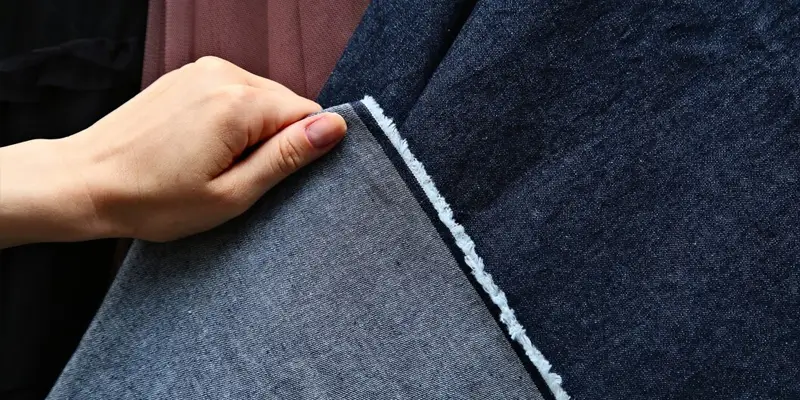
The Origin and Popularity of Denim
Denim fabric traces its origins back to a town in France called Nimes, where a unique fabric known as serge de Nimes was created. This particular fabric, woven in a warp-faced cotton weave style, gained popularity throughout the region and eventually spread to neighboring Italy.
Over time, Genoa, a city in Italy, became the largest producer of this fabric. The name “denim” was born from the French word for Genoa, Genes, and the fabric became widely known as jeans. This fabric, originally used for its durability, gained renewed popularity during the American Gold Rush, where gold miners appreciated its toughness and easy repairs. The miners preferred denim because of its lasting strength and ability to withstand rough conditions. Although other dyes were available in the American West, manufacturers like Levi Strauss chose to keep using the indigo blue dye that was used by Genoan fabric merchants, cementing the fabric’s iconic blue color.
The Fabric Composition of Denim
Denim is traditionally made from 100% cotton, woven in a twill weave that creates a diagonal ribbing on the fabric’s surface. The warp yarns are dyed, often with indigo dye, which gives denim its iconic blue color, while the weft yarns remain undyed. The combination of the two creates a strong, durable fabric that has become a staple in fashion for both workwear and casual clothing. Over the years, denim has evolved, with synthetic fibers like polyester and spandex sometimes blended in to improve stretch and durability, making it more comfortable and flexible.
In modern production, selvedge denim is often woven on traditional shuttle looms, which create a tightly bound finished edge that prevents the fabric from fraying. This technique, often associated with high-quality denim, is admired for its craftsmanship and durability. The evolution of modern blends ensures that denim remains resilient and versatile, fitting into both casual and luxury fashion..
The Making of Denim Fabric
From Field to Fiber: Cotton Cultivation
Denim begins in the fields with the cultivation of cotton plants. As these plants grow, they form protective fiber bolls around small black seeds. These fibers are collected and then separated from their seeds using a process known as ginning. The resulting raw cotton fibers are the essential building blocks of denim.
Transforming Raw Cotton: Cleaning and Spinning
Once harvested, the cotton fibers are cleaned, carded, and combed to align them into long strands. These strands are then twisted and spun into yarn using modern industrial spinning machines. At this stage, enhancements such as enzyme washes, pre-washing, or the blending of synthetic fibers like elastane can be applied to improve stretch, durability, and softness in the final denim fabric.
The Indigo Identity: Dyeing the Yarn
Denim’s global recognition comes from its indigo dyeing process. The spun yarn—especially the warp threads—is repeatedly dipped into vats of natural or synthetic indigo dye. Techniques like rope dyeing and slasher dyeing are used to create denim’s iconic deep blue color. Meanwhile, the weft yarns are usually left undyed, which is what gives denim its unique warp-faced twill weave appearance.
Weaving the Fabric: From Yarn to Denim
Dyed yarn is woven on shuttle looms or projectile looms into fabric with the signature twill weave structure. This creates warp-faced denim, where the indigo warp threads dominate the surface while lighter weft threads remain visible underneath. Premium selvedge denim, produced on traditional shuttle looms, is prized for its tightly woven, self-finished edges. The woven textile is then made into large bolts of denim, which can be purchased by the yard.
Finishing Touches: Preparing for Fashion
Before becoming wearable, denim undergoes finishing processes. Treatments such as sanforization prevent shrinkage, while techniques like stone washing, distressing, or acid washing add character and style. After finishing, bolts of denim are cut, shaped, and stitched into diverse consumer products, including jeans, jackets, shirts, skirts, and durable workwear.
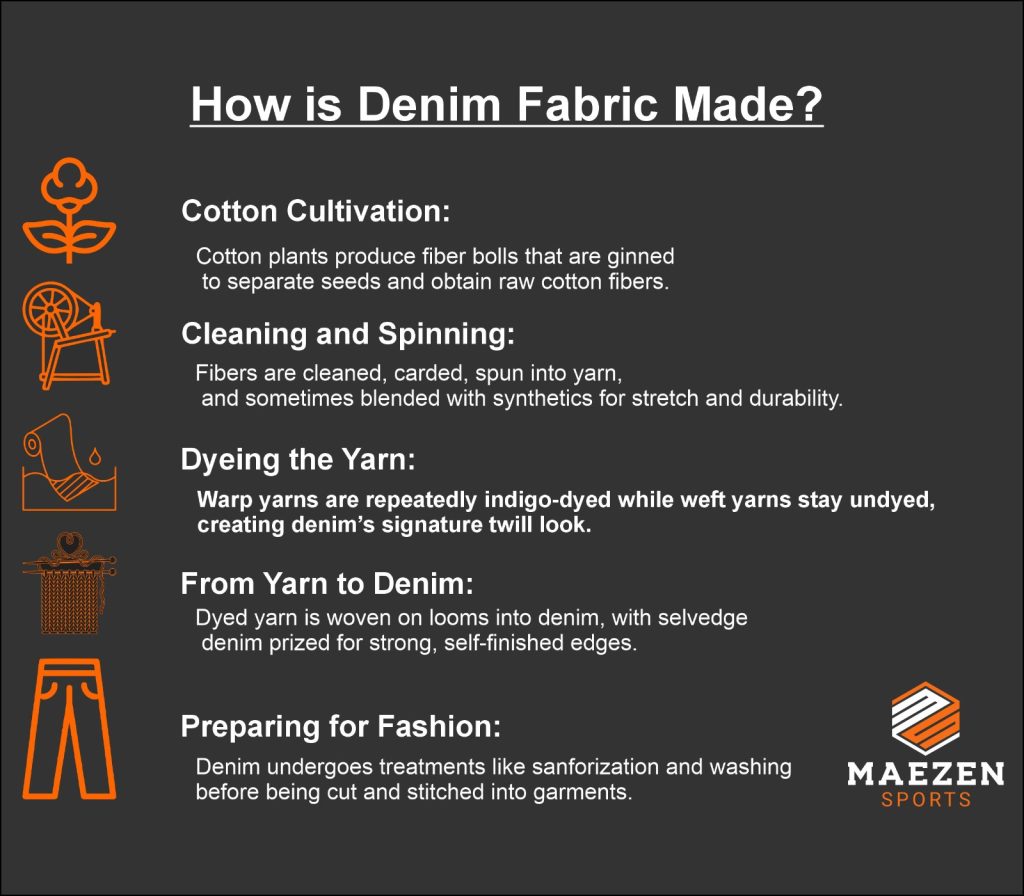
Various Forms of Denim Fabric
1. Raw Denim (Dry Denim)
Raw denim is untreated and unwashed after the dyeing process, giving it a stiff texture. Over time, it molds to the wearer’s body and develops unique fade patterns. This makes each pair one-of-a-kind, loved by denim enthusiasts.
2. Selvedge Denim
Selvedge denim is woven on old shuttle looms, producing tightly bound edges that don’t fray. Recognizable by the colored line on the seam, it’s considered high-quality and durable. Often used in premium jeans, it’s prized for craftsmanship.
3. Stretch Denim
Stretch denim blends cotton with elastane (spandex) for added flexibility and comfort. It’s popular for skinny jeans, jeggings, and slim fits that move with the body. Perfect for modern fashion requiring both style and ease.
4. Sanforized Denim
Sanforized denim has been pre-shrunk to control future shrinkage. This ensures jeans maintain their size and fit after washing. Most modern denim is sanforized to avoid unpredictable sizing issues.
5. Acid Wash Denim
Acid wash denim is treated with pumice stones soaked in chlorine for a bold, marbled look. It gained huge popularity in the 1980s punk and rock fashion scenes. Today, it’s used for a retro or edgy aesthetic.
6. Stone Wash Denim
Stone wash denim is washed with pumice stones to create a faded, lived-in appearance. The process softens the fabric and gives it a broken-in feel. It’s ideal for casual, vintage-inspired styles.
7. Poly Denim (Poly-Cotton Blend)
Poly denim mixes cotton with polyester, making it lighter and wrinkle-resistant. It’s more affordable than 100% cotton denim and dries faster. This makes it a practical choice for everyday wear.
8. Ecru Denim
Ecru denim is unbleached and undyed, showcasing cotton’s natural cream color. It’s a clean, minimalist alternative to traditional indigo jeans. Favored for its fresh and modern look in fashion.
9. Crushed Denim
Crushed denim has a permanently wrinkled or textured effect. The irregular surface adds a unique character and casual vibe. It’s often used in fashion-forward pieces to stand out from classic denim.
10. Colored Denim
Colored denim is dyed in shades beyond indigo, such as black, grey, red, or pastels. It allows for greater creativity and style variation. Popular in both streetwear and high fashion, it offers bold alternatives to blue jeans.
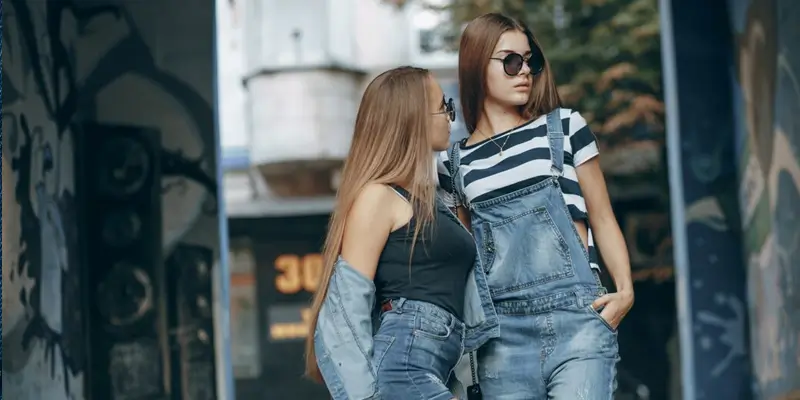
What is Twill Denim and Its Types
Twill denim is a popular fabric made using a twill weave, which creates diagonal lines known as twill lines. The most common type of twill used in denim is 3×1 right-hand twill. In this weave, for every weft yarn, there are three warp yarns on the fabric’s face, creating a strong and durable structure. This method gives denim its characteristic diagonal ribbing and is warp-faced, meaning the warp yarns are the most prominent. In right-hand twill, the twill lines run from right to left on the fabric’s surface.
Another common type of twill denim is 3×1 left-hand twill, where the twill lines run from left to right. You may also encounter 2×1 twill, where there are two warp yarns for every weft yarn. Additionally, there is broken twill, a design created to prevent fabric from pulling in the direction of the weave, which can cause leg twist. This method helps maintain the fabric’s shape, ensuring it remains consistent and durable over time. Each type of twill offers a unique look and feel, making it versatile for different styles of denim fabric and denim types.
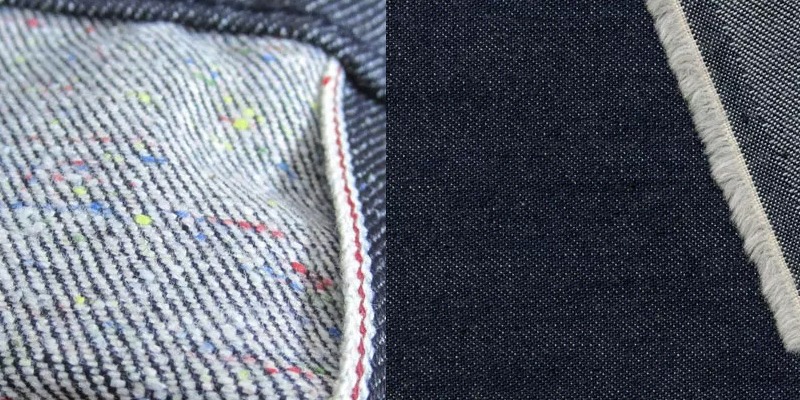
Applications of Denim Fabric
Clothing Versatility: Denim is used in various clothing items such as jackets, shirts, skirts, and suits, suitable for both casual and formal wear.
Accessories: Denim is popular in bags, hats, belts, and footwear, including sneakers, combining durability with style.
Jeans Styles: Denim remains a staple in jeans, available in different styles like skinny, straight leg, bootcut, and more.
Skirts and Dresses: Denim is used for a variety of skirts and dresses, from mini to maxi lengths, adding versatility to fashion.
Household Items: Denim is used for upholstery in furniture such as sofas, chairs, and ottomans, providing both durability and style.
Home Decor: Denim is incorporated into curtains and tablecloths, contributing to home decor with its strong, lasting quality.
Industrial Applications: Denim is used in workwear, tarpaulins, and other heavy-duty applications requiring a strong, long-lasting fabric.
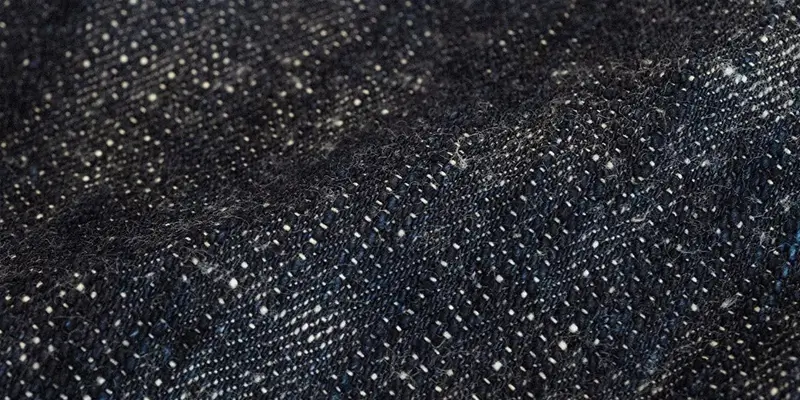
Denim and Its Impact on Fashion and Culture
Denim has come a long way from being basic workwear to becoming a global symbol of style and identity. Its versatility and durability have made it a favorite across many subcultures and trends. From the American West to high fashion runways, denim has crossed geographical and social boundaries, fitting into diverse cultures and fashion styles. Over time, denim has become a powerful cultural icon, with its rebellion and nonconformity being celebrated in youth culture and counter-culture movements, especially from the 1950s onward. Its enduring appeal lies in its adaptability, whether it’s classic denim jeans, denim jackets, or streetwear.
In addition to its role in fashion, denim has had a significant impact on cultural identity and individual expression. It has become a way for people to showcase their style, and its widespread use has helped shape societal shifts over time. As we move towards more sustainable practices in fashion, denim is evolving to address sustainability through the use of recycled cotton, organic materials, and closed-loop systems. These changes reflect denim’s continued relevance in the ever-changing world of fashion and culture, ensuring that it remains a fabric that resonates with people globally.
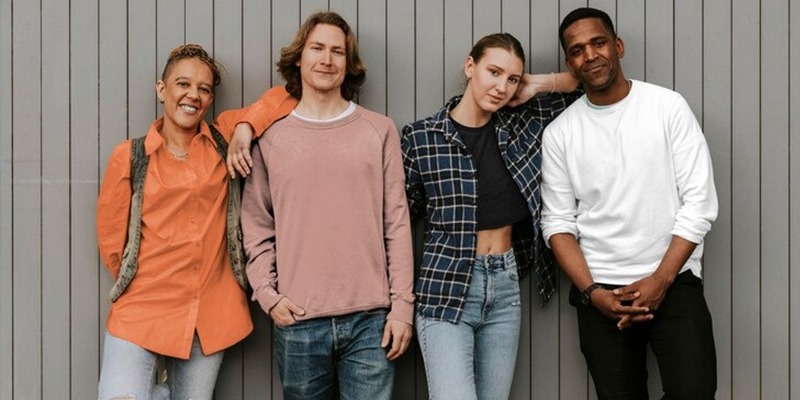
The Environmental Impact of Denim
The production of denim has a significant environmental impact, mainly due to the high levels of water, energy, and chemicals used in manufacturing. A large amount of water is needed for dyeing and washing denim, which contributes to environmental concerns. As the demand for denim continues to rise, there is a growing need for eco-friendly practices. Many denim manufacturers are now focusing on sustainability by reducing water consumption, using eco-friendly dyes, and implementing recycling programs to minimize waste and lessen the fabric’s environmental footprint.
In addition to these sustainable practices, certifications such as the Supima certification ensure that Supima cotton, known for its superior quality, is used in denim production, supporting higher sustainability standards. The Cradle to Cradle certification also plays a role by evaluating the environmental and social impacts throughout the product’s lifecycle, ensuring responsible sourcing and production methods. These certifications help promote responsible production and contribute to making denim a more eco-friendly fabric overall.
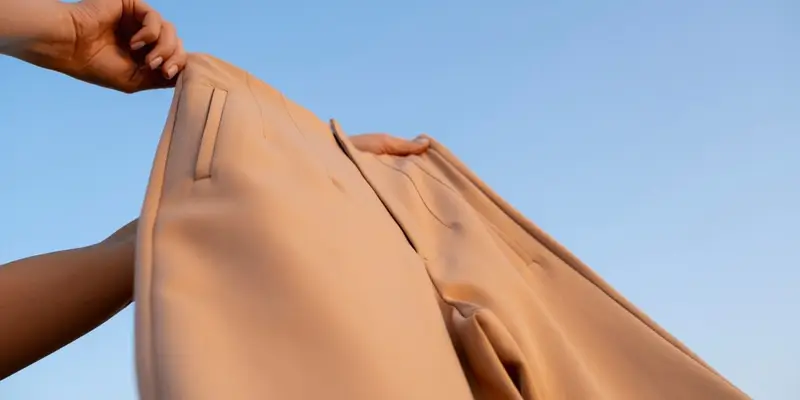
How to Maintain and Care for Denim
When it comes to maintaining denim, it’s important to go against the instinct to keep the fabric looking new. Denim is designed to age and break in, becoming more comfortable over time. Wearing it allows the fabric to mold to your form, get softer, and develop its unique personality. The key to denim care is understanding that it requires very low maintenance—washing it too often can strip it of its character.
Does Denim Wrinkle?
One of the great things about denim is that it doesn’t wrinkle, making it easier to care for. Denim jeans are low-maintenance and don’t need to be ironed. In fact, denim only needs to be washed once every five wears. When you do wash your jeans, always turn them inside out to avoid fading, and tumble dry them on low to maintain their fit. These simple steps will help your denim last longer and keep its shape.
Modern Manufacturing of Denim
Modern denim production has evolved significantly with the integration of technology and a stronger emphasis on sustainability. Innovations like computer-aided design (CAD) for precise cutting and laser technology for creating detailed patterns are improving production efficiency. Additionally, robotic sewing machines allow for faster production with consistent results. These technological advancements make it possible to meet the growing demand for high-quality denim while maintaining precision.
On the sustainability front, manufacturers are adopting eco-friendly dyeing techniques, using less water and chemicals during the production process. Water recycling systems and innovative fabric waste reduction methods have also gained importance. Recycled cotton and other sustainable materials are increasingly used in the production of denim, making it more eco-friendly. This combination of advanced technology and sustainability is shaping the future of denim, allowing it to remain both functional and environmentally responsible.
Conclusion
From its roots as durable workwear to its place on fashion runways, denim has become far more than just fabric—it’s a cultural icon. Its sturdy twill weave, indigo color, and adaptability have carried it across generations, symbolizing both practicality and style.
As modern production embraces technology and sustainability, denim continues to evolve while staying true to its timeless appeal. Whether in jeans, jackets, or contemporary designs, denim remains a fabric of resilience, individuality, and enduring fashion.From its roots as durable workwear to its place on fashion runways, denim has become far more than just fabric—it’s a cultural icon. Its sturdy twill weave, indigo color, and adaptability have carried it across generations, symbolizing both practicality and style.
As modern production embraces technology and sustainability, denim continues to evolve while staying true to its timeless appeal. Whether in jeans, jackets, or contemporary designs, denim remains a fabric of resilience, individuality, and enduring fashion.
FAQs
1. What is the best denim fabric?
Selvedge denim is among the best because of its durability and high-quality craftsmanship.
2. How do I make my denim last longer?
Wash denim less often, air dry rather than use a dryer, and don’t use harsh detergents.
3. What is the difference between raw denim and washed denim?
Raw denim is untreated and unwashed, whereas washed denim is treated to soften and age the fabric.
4. Can denim be sustainable?
Yes, several brands now produce organic and recycled denim to lessen environmental footprint.
5. Which is the priciest kind of denim?
Japanese selvedge denim and designer brand tend to be the priciest kind of denim because they are made by hand and of high quality materials.



